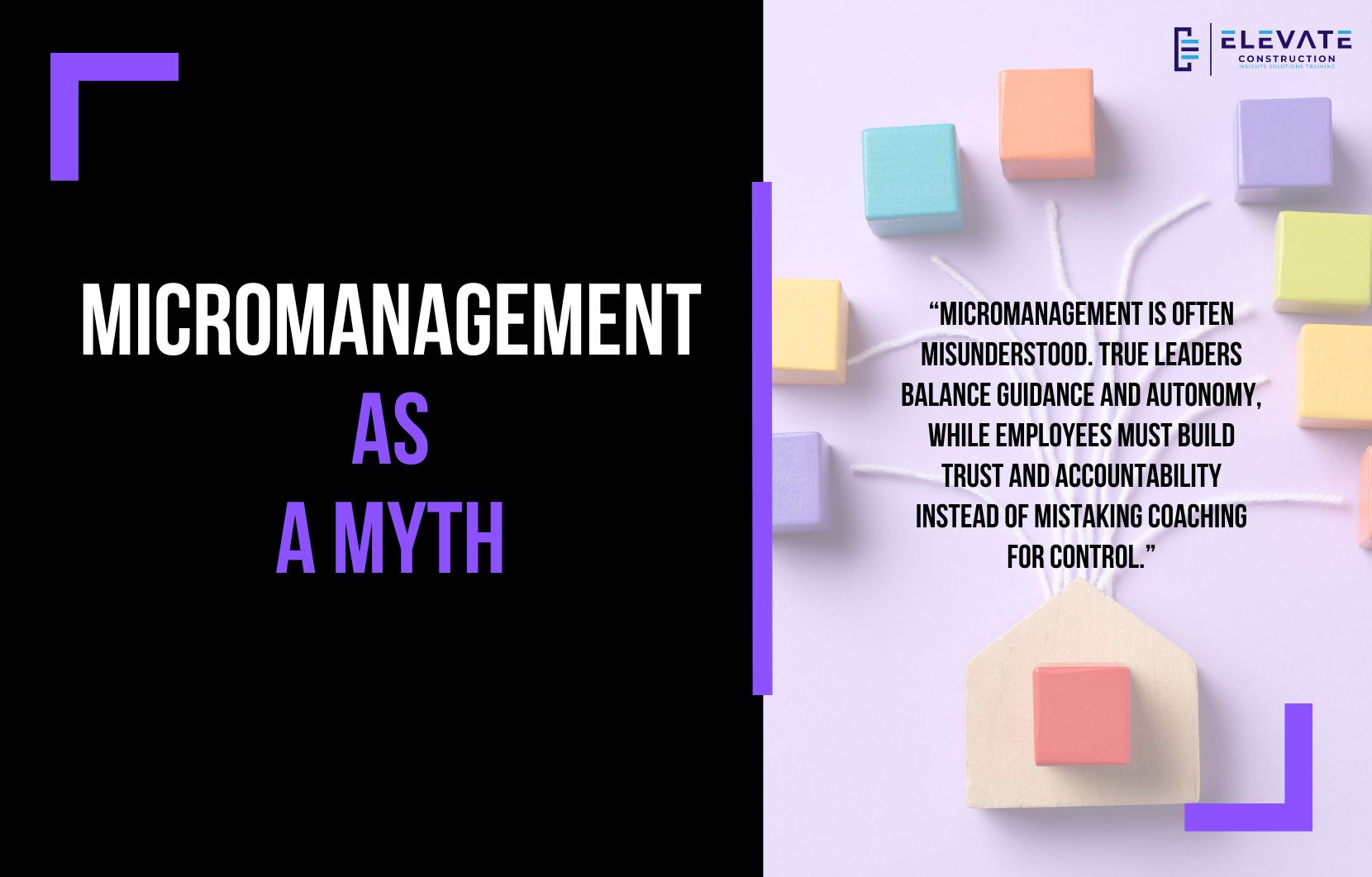Micromanagement Myths in Construction
Micromanagement is often portrayed as one of the most toxic behaviors in the workplace. Scroll through social media and you will find endless lists describing micromanaging bosses as hawks, control freaks, or nitpickers. While there are kernels of truth in those complaints, the reality is more complex. In construction and leadership, many of the things labeled as micromanagement are actually parts of effective training, accountability, and team development.
When someone is learning a new role, it is natural and necessary for leaders to be closely involved. Training often follows the edge method: explain, demonstrate, guide, and enable. Early on, explaining and demonstrating can look like micromanagement, but it is actually coaching. As the individual gains competence, guiding and enabling allow them to earn autonomy. Expecting full freedom before mastering the basics is unrealistic and unfair.
Take the “boss hawk” example. Leaders who check in constantly may be seen as controlling, but in the forming and storming stages of team development, short iterations and frequent feedback are essential. If those check-ins continue once the employee is fully competent, then it becomes unhealthy. But early on, the intention is to build trust, not to suffocate.
The same applies to the so-called control freak who double-checks work. If a new team member has not yet developed their own quality control process, it is the leader’s responsibility to step in. Double-checking every detail is frustrating only when applied to seasoned professionals who have proven themselves. For new employees, it is simply smart oversight.
Another myth is that meetings automatically mean inefficiency. In construction, collaboration is the equivalent of two workers holding both ends of a rebar bundle to tie it together. That is a meeting. For teams working in offices or remotely, meetings are how collaboration happens. Productive meetings solve problems before they spiral into rework. Dismissing them as unnecessary is a misunderstanding of how effective teams coordinate.
Even nitpicking has its place. In marketing, publishing, or communicating with clients, attention to detail can prevent costly errors. Checking fonts, spelling, and formatting may feel excessive, but in reality it saves embarrassment and strengthens trust. The problem is not precision itself, but when it is applied in areas where it does not add value.
There are, of course, behaviors that cross the line. Leaders who steal ideas or take credit for team efforts damage trust and credibility. Likewise, managers who never allow autonomy, even when employees are proven and capable, create frustration. But those situations are less common than people think.
The truth is that most complaints about micromanagement come from people who are not yet ready for the freedom they demand. They mistake coaching, training, and accountability for control. Real micromanagement is rare. What is far more common is a lack of trust, communication, and accountability on both sides.
Instead of playing games or responding with sarcasm, employees should focus on building trust with their managers by delivering quality work, communicating proactively, and being transparent. Leaders, on the other hand, must know when to transition from close involvement to empowerment. Healthy organizations are built on connection, vulnerability, and mutual accountability, not adversarial relationships.
This is why the workplace should feel like a family. Dismissing the idea of family at work reveals a lack of genuine care for people. A healthy family provides accountability, love, correction, and support. Bringing that same mindset into the workplace is what creates great teams.
Micromanagement is not the epidemic people claim it to be. The real epidemic is disengagement, mistrust, and the refusal to connect authentically. Strong leaders step in when needed, back off when it is time, and always focus on helping their people succeed.
On we go.
Key Takeaway
Micromanagement is often misunderstood. True leaders balance guidance and autonomy, while employees must build trust and accountability instead of mistaking coaching for control.
If you want to learn more we have:
-Takt Virtual Training: (Click here)
-Check out our YouTube channel for more info: (Click here)
-Listen to the Elevate Construction podcast: (Click here)
-Check out our training programs and certifications: (Click here)
-The Takt Book: (Click here)
Discover Jason’s Expertise:
Meet Jason Schroeder, the driving force behind Elevate Construction IST. As the company’s owner and principal consultant, he’s dedicated to taking construction to new heights. With a wealth of industry experience, he’s crafted the Field Engineer Boot Camp and Superintendent Boot Camp – intensive training programs engineered to cultivate top-tier leaders capable of steering their teams towards success. Jason’s vision? To expand his training initiatives across the nation, empowering construction firms to soar to unprecedented levels of excellence.
On we go

